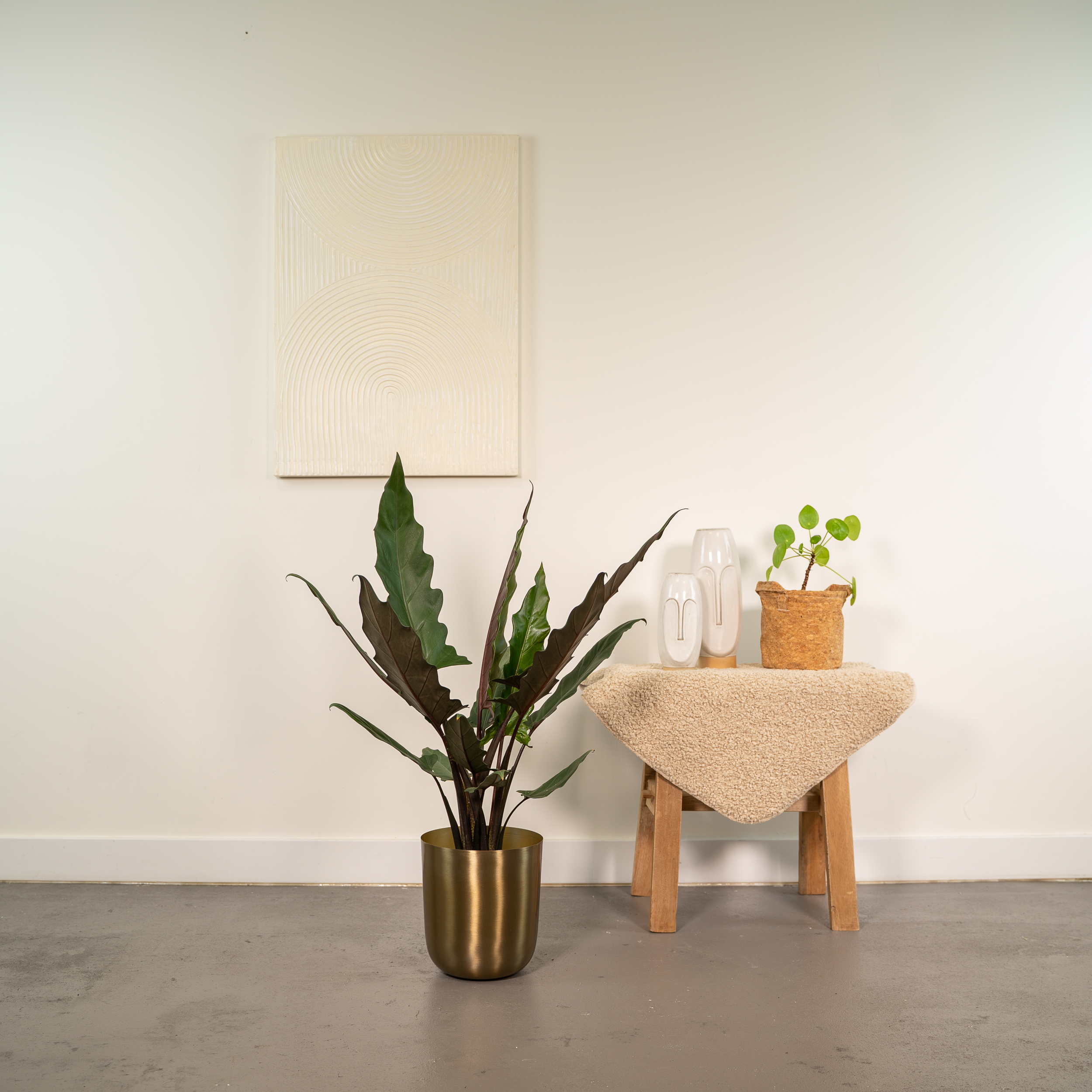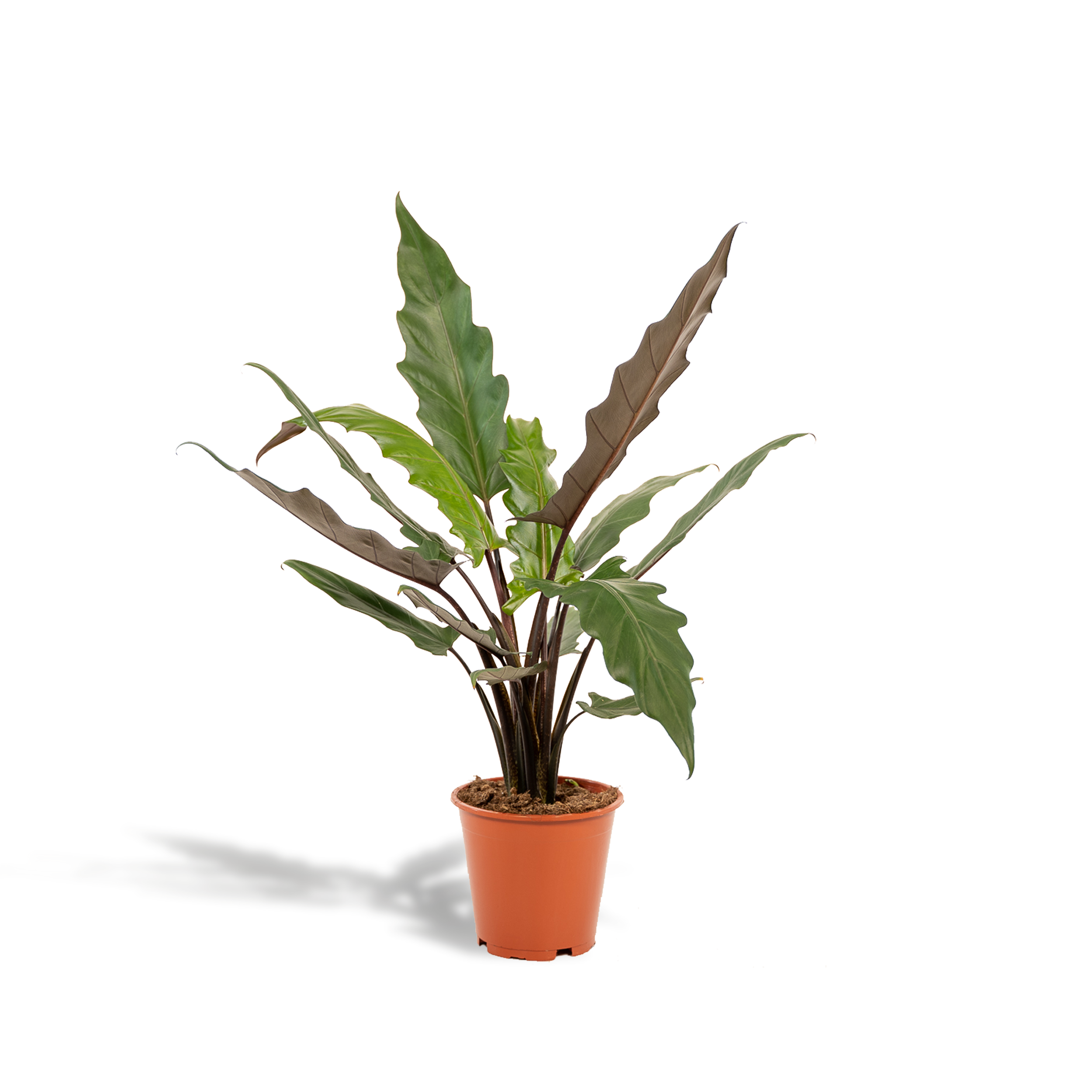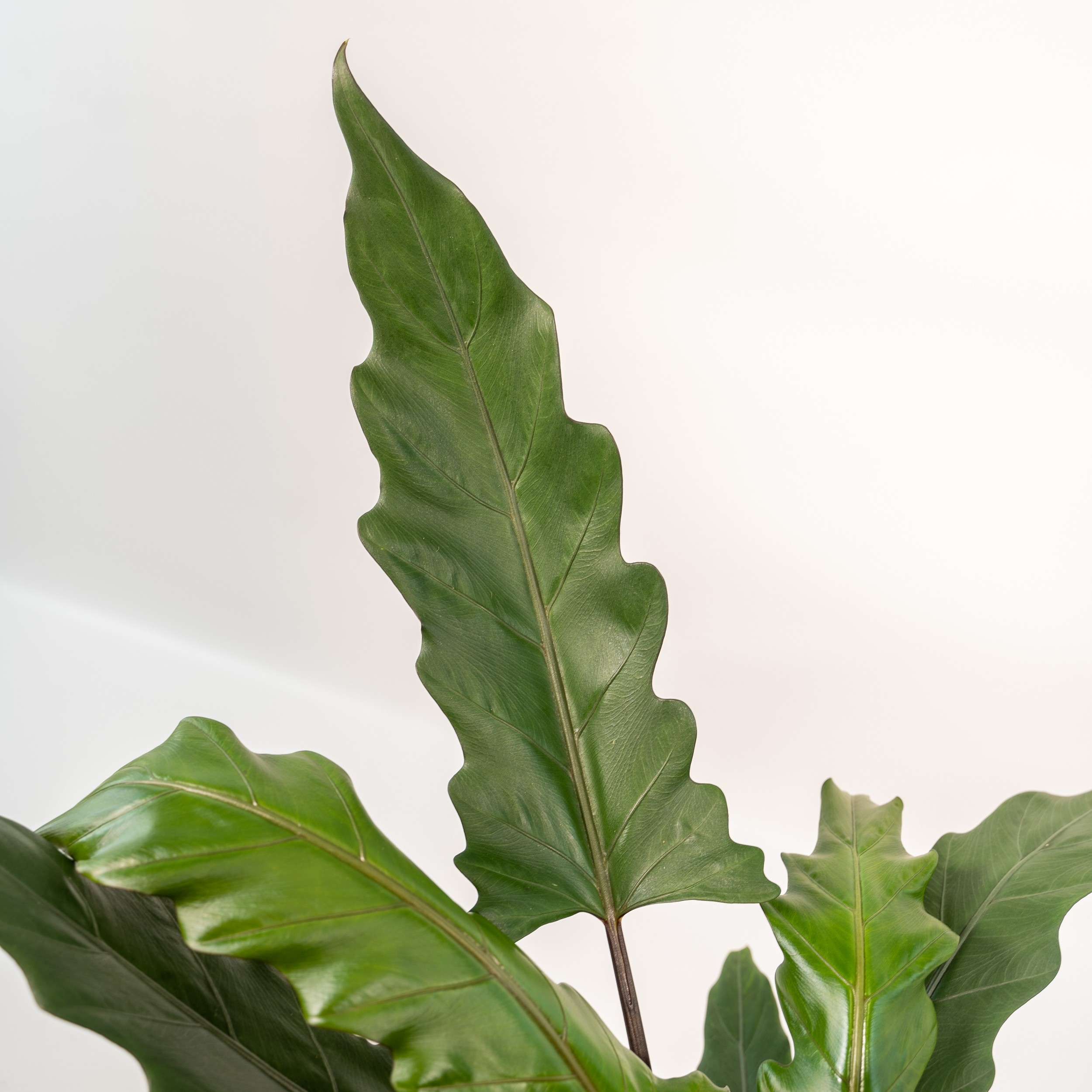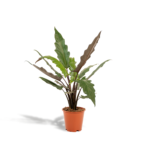Alocasia Lauterbachiana
This exotic and cool Alocasia Lauterbachiana is a real eye-catcher. So it’s time to take good care of your new Elephant Ear.
Place the Alocasia Lauterbachiana in a bright place, but try to avoid direct sunlight. Avoid draft, as this houseplant does not like it. Rotate the Elephant Ear regularly so that the houseplant does not grow to one side. The perfect temperature for this plant is between 18 and 22 °C.
The Alocasia Lauterbachiana likes to have a sip of water regularly and is really a moist soil lover. Every week a glass of water is enough.
Give the Elephant Ear a little plant nutrition twice a month. In winter it’s better to give plant nutrition once every two months.
- Highest quality plant
- Fresh from the plant nursery
- Delivered in most sustainable manner
More information
Every plant loves a little extra care! It is best for the Alocasia to be repotted once every two years. It is best to do this in the spring, because then the growth period of the Alocasia also starts and the plant is strong enough to recover from the move. It is very important to use new and fresh potting soil.
Pruning is not necessary for the Alocasia. The only thing that is good to do is sometimes trim the leaves. For example when the Areca has been in the sun and the leaves are a little burned. When you want to trim the leaf it’s important to use a pruner and cut the leaf 2cm above the stem.
Does your Alocasia have burned leaves? This is probably the result of too much light. You can fix this by cutting off the burned leaves so it can grow again.
Does your Alocasia have yellow brown edges? This is probably the result of too much water. It’s best to cut off the affected leaves and to not give water for a little while. It’s also a good idea to repot the Alocasia at this point, to prevent root rot.
Does your Alocasia have hanging leaves? This is probably the result of too much water. It’s best to cut off the affected leaves and to not give water for a little while. It’s also a good idea to repot the Alocasia at this point, to prevent root rot.





